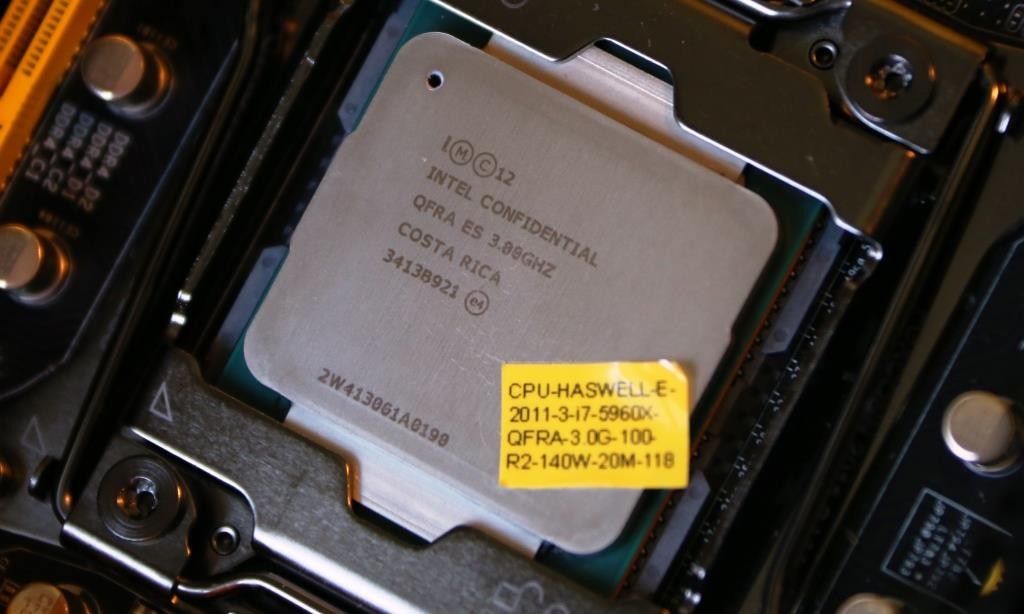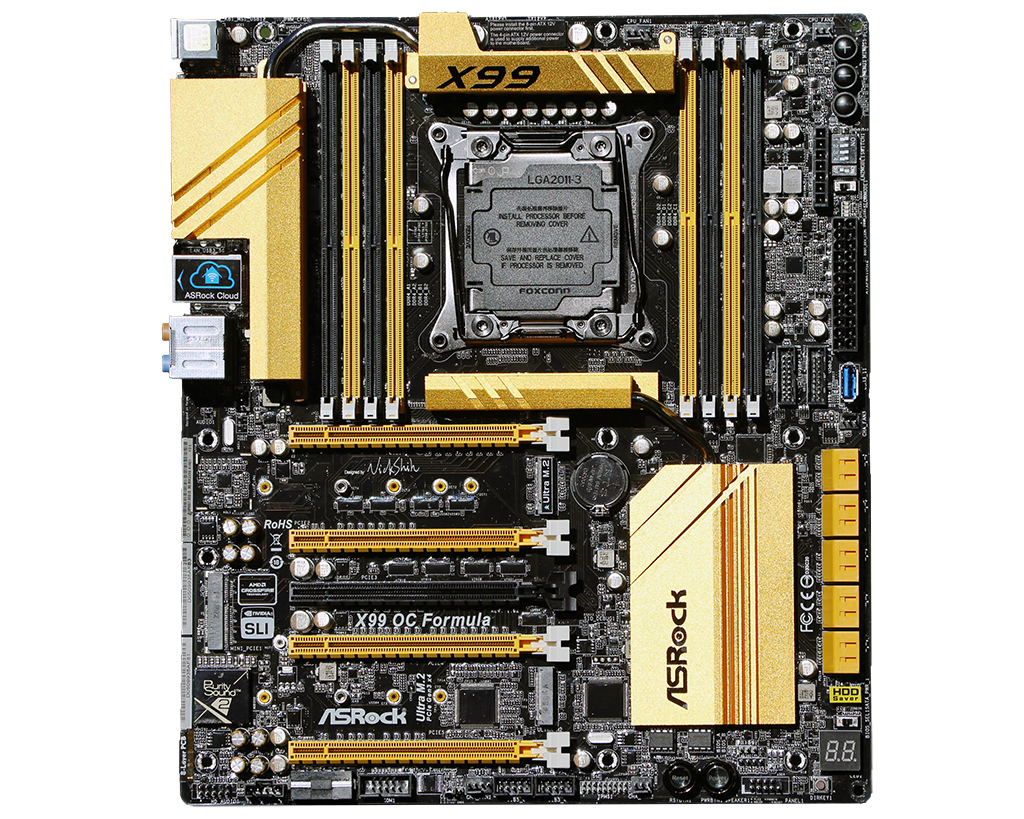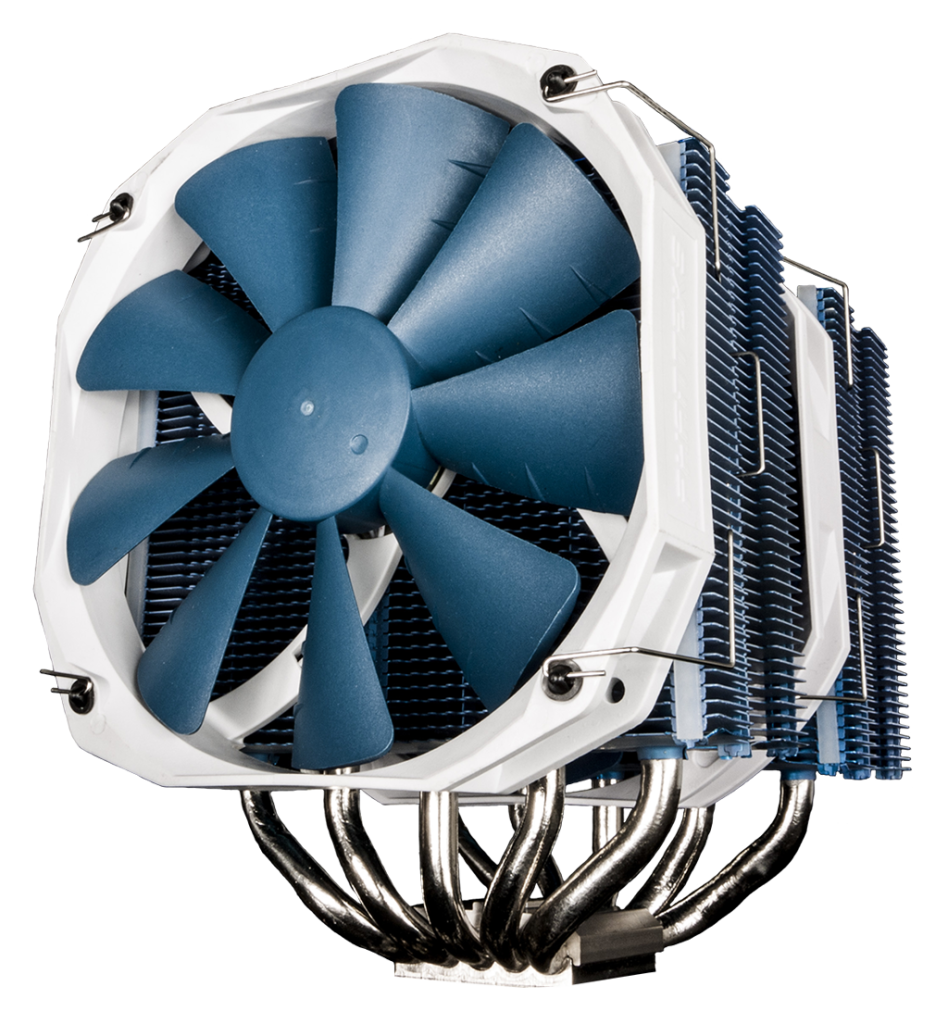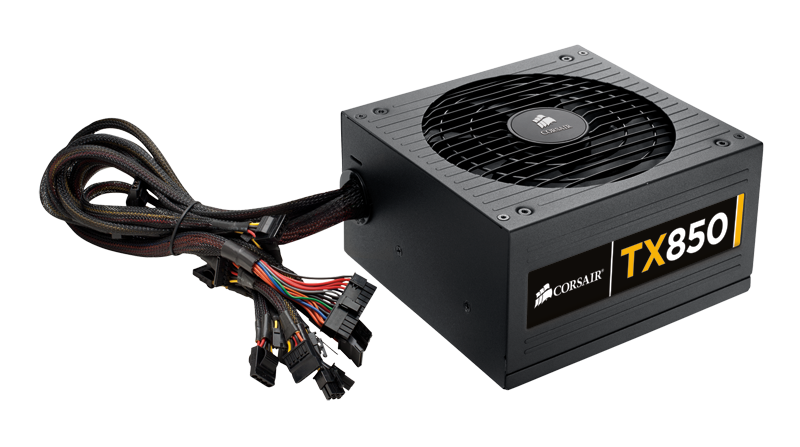HARDWARE OVERVIEW
When it comes to overclocking your components, the most important thing is the quality of … your components. A high-quality motherboard can be the difference between only getting a 10% overclock and getting a 40% overclock.
Obviously, picking PC hardware can be difficult enough on its own, having to choose what would be best for overclocking can be a whole other story. So, we’re going to give a quick run-through of the hardware we’re using in our test bench and try to explain why we’re using it so you can decide what would be best for you.
PROCESSOR
As this is an X99 overclocking guide, our choices for CPUs are limited to 3 options; the eight-core Core i7 5960X and the six-core 5930K and 5820K. For our purposes, we’ll be using the big-boy 5960X, users of the latter two should have no issues following this guide, as it is the same process.
It is worth noting, that overclocking potential for CPUs will vary from part to part, there isn’t any guarantees on how well your part will overclock. This is what overclockers commonly refer to as the ‘Silicon Lottery’, in that you never know what you’re going to get. That being said, Haswell-E parts are known to overclock very well, especially the eight-core 5960X we’ll be using in this guide.
You can also see more information on the Core i7 5960X and the X99 platform in our full review.
MOTHERBOARD
After the processor, without a doubt the most important part in your system when it comes to overclocking, is your motherboard. As stated earlier, a high-quality board can make all the difference. Now, while pretty much all X99 motherboards are fairly capable overclocker’s, few come close to the overclocking features as the ASRock X99 OC Formula, which we’ll be using in this guide. In fact, ASRock currently holds the world-record for overclocking the 5960X using this very same motherboard.
That doesn’t mean you’ll need the most expensive, highest-end motherboard in order to overclock your CPU, in fact there will be plenty of more budget-minded boards that will provide sufficient overclocking performance for most users. Although, most X99 motherboards are fairly pricey to begin with compared to their mainstream Z97 counterparts, but you do get a lot for your money.
For more information on the ASRock X99 OC Formula, check out our full review here.
CPU COOLER
Next on the list is our CPU cooler. Your CPU cooler can effect your overclocking potential drastically, as with higher clock speeds comes higher temperatures, and better heat-dissipation means more room for overclocking without hitting your thermal ceiling. This is similar to how a radiator cools your car’s engine, thus allowing it to run without overheating.
For this guide we’ll be using the Phanteks PH-TC14PE, which is a high-end dual tower cooler featuring two 140mm fans. It should provide fairly good cooling for even the most demanding overclocks. Other options would be the Noctua NH-D15 or an AIO (all-in-one) liquid cooler like the Corsair H110, or for even more cooling performance you could go with a 360mm liquid cooler such as the Themaltake Water 3.0 Ultimate, which we reviewed here.
RAM
Memory quality is not hugely important when it comes to overclocking your CPU, but it is very important if you plan on overclocking your RAM. While, in our experience overclocking memory doesn’t effect actual day-to-day performance, it can have some effect in certain tasks such as video editing.
Even though we won’t be doing any RAM overclocking in this guide, we’re still going to go with a high-quality overclocking kit, 16GB (4x4GB) of G.Skill Ripjaws 4 DDR4 2666MHz.
We’ll be doing a full review of this kit soon, so check back for that!
PSU
When it comes to overclocking, you’ll want to have a power supply capable of providing lots of clean power, as such we’ll be using our workhorse Corsair TX850 v2. It may be a little older, but as it is manufactured by SeaSonic, it will be more than capable.
Of course, if you’re in the market for something now, Corsair’s RM, or AX series will do you fine, as well as EVGA’s G2 series and Cooler Master’s V series, to name a few.
Other components such as graphics, storage drives and cases won’t have as much of an effect on overclocking, with the latter you’ll definitely want something with good airflow and enough room for your components and potential upgrades. For those interested, here is a list of the rest of our system’s specifications.
| PC CHASSIS: | Thermaltake Core V51 |
| GRAPHICS CARD: | ASUS STRIX GTX 970 OC |
| STORAGE: | Samsung 840 250GB |
| STORAGE 2: | ADATA PREMIER PRO 1TB SSD |
Now that we’ve got our hardware down. On the next page we’ll go over some of the software we’ll be using to overclock on system.
 Technology X Tomorrow's Technology Today!
Technology X Tomorrow's Technology Today! 





You overclocked 5960X from 3.0 to 4.2 Hhz (40%). Does that mean I can overclock a 5930K from 3.5 to 4.7 Ghz or somewhere close to that?
Your ability to overclock will vary depending on a few factors:
1. CPU Binning: Some CPUs can overclock higher at lower voltages than others.
2. Motherboard: Some motherboards can handle higher overclocks than others due to their VRM design.
3. Cooling: Obviously, the better cooling performance offered by your cooler the lower temperatures you’ll have, thus higher potential overclocks.
Every X99 motherboard we’ve tested has been able to overclock our 5960X to at least 4.5GHz stable, so we’d say most X99 motherboards will be able to do that without issue, some may just require more tweaking than others. In the case of your 5930K, if sufficient cooling is present and the chip is binned nicely, we’d say you should be able to hit between 4.5-4.7GHz fairly easily.
Hi Donny. Would this guide apply even if I was trying to OC to 4.6 or 4.7?? Or do other parameters come into play at those higher speeds?
Also if my RAM has an XMP profile that sets it to 2666 should that be “on” while doing the initial overclocking… or should I wait until I get a stable OC?
I think the “Adaptive” option should allow for efficient power management of the CPU, but no overclocking guide explains which parameters need twicking and how.
hi i have the same cpu and i cant even oc to 4.0 with out a freeze or something i try evrey single thing try to play with the volt and nothing work im not pass any software strees test only pass in normal 3.6 boost to 3.8 intel that it i want to get over that and icant
Nice guide, very straightforward. I’ve been doing this for a while, my first OC was an Intel 486 DX25 clocked to 50MHz – that’s a 100% speed boost just requiring the addition of a heatsink and fan (no heatsink required at stock). I’m new to the X99 platform though after moving “up” from an X58 and this has given me all the pointers I need.
I’d suggest anyone wanting to go down the OC route should seriously think about buying a closed-loop liquid cooler (a 120mm model with a deep radiator such as the Corsair H80i or Arctic Liquid Freezer will be a great starting place), and a case that’s designed with airflow in mind.
I use an old Lian Li PC-X500 case which offers unobstructed airflow from the front to the back straight over the CPU area and the VRMs, and the lower front fan keeps the GPU and PCIe slots well ventilated. A good case is a long-term investment and will see out several mobo/CPU swaps so budget for one. Sure, if you’ve got a tidy build you’ll want to show it off but for me airflow is everything and should take priority over bling.
As for the liquid cooling, it needn’t cost a great deal more than a good quality air cooler and the closed-loop “all-in-one” units offer a very simple installation with no maintenance required. Importantly, liquid cooling offers a much shorter cool-down time when the CPU punishment stops. A hot-running CPU may seem initially stable but can eventually suffer from a variety of problems that impact stability and longevity. Liquid cooling will keep it temps lower for more of the time, so again make sure you budget for it.